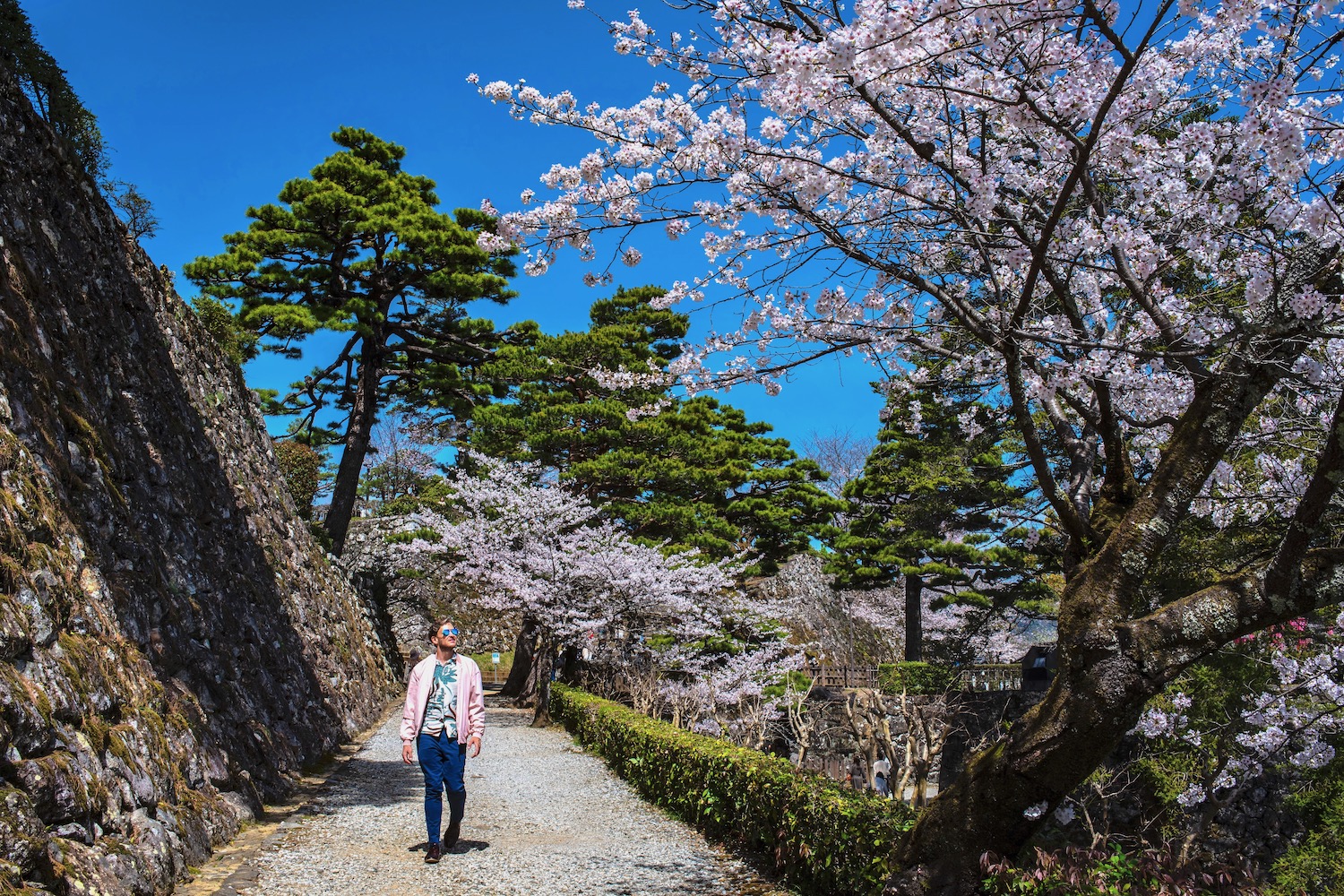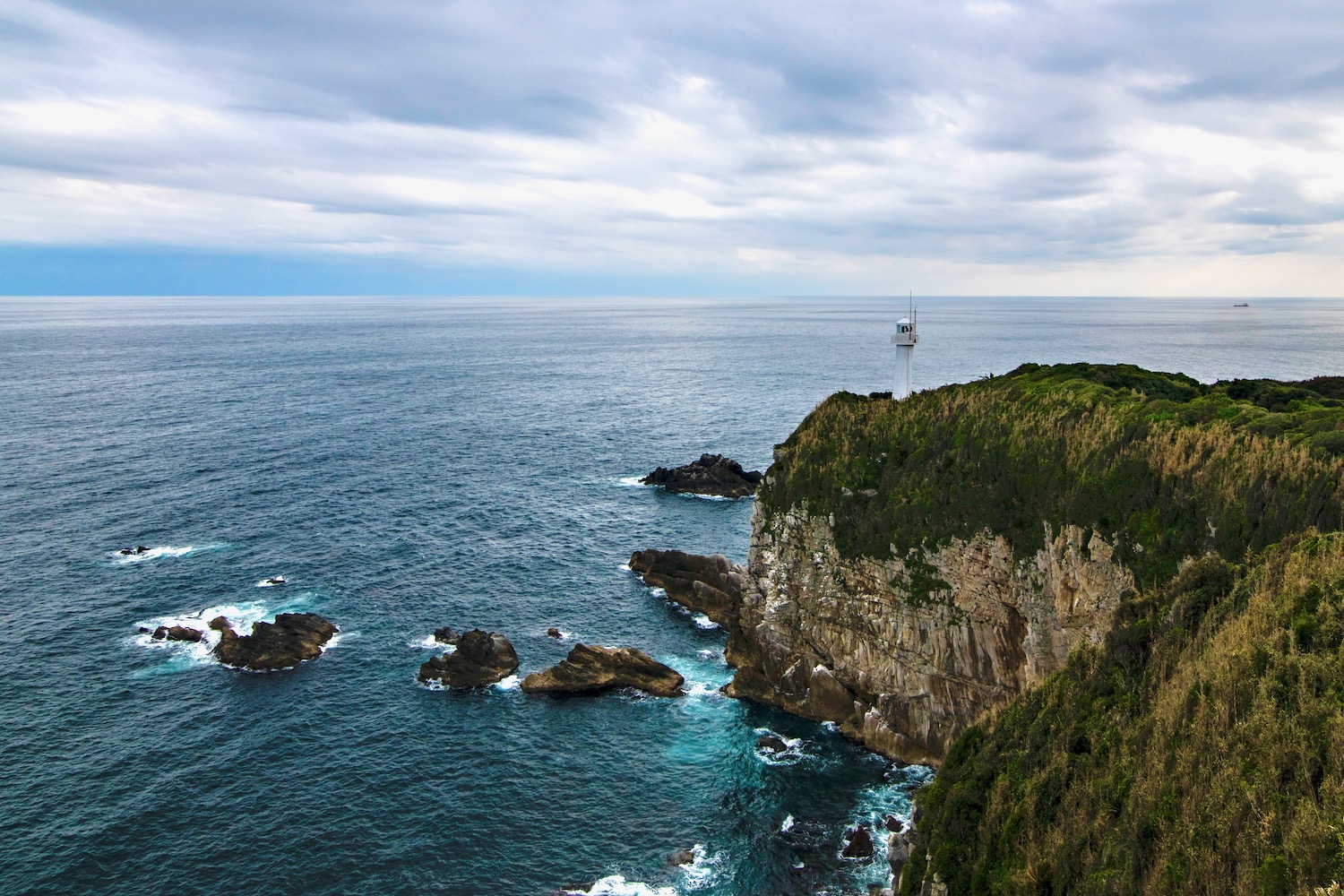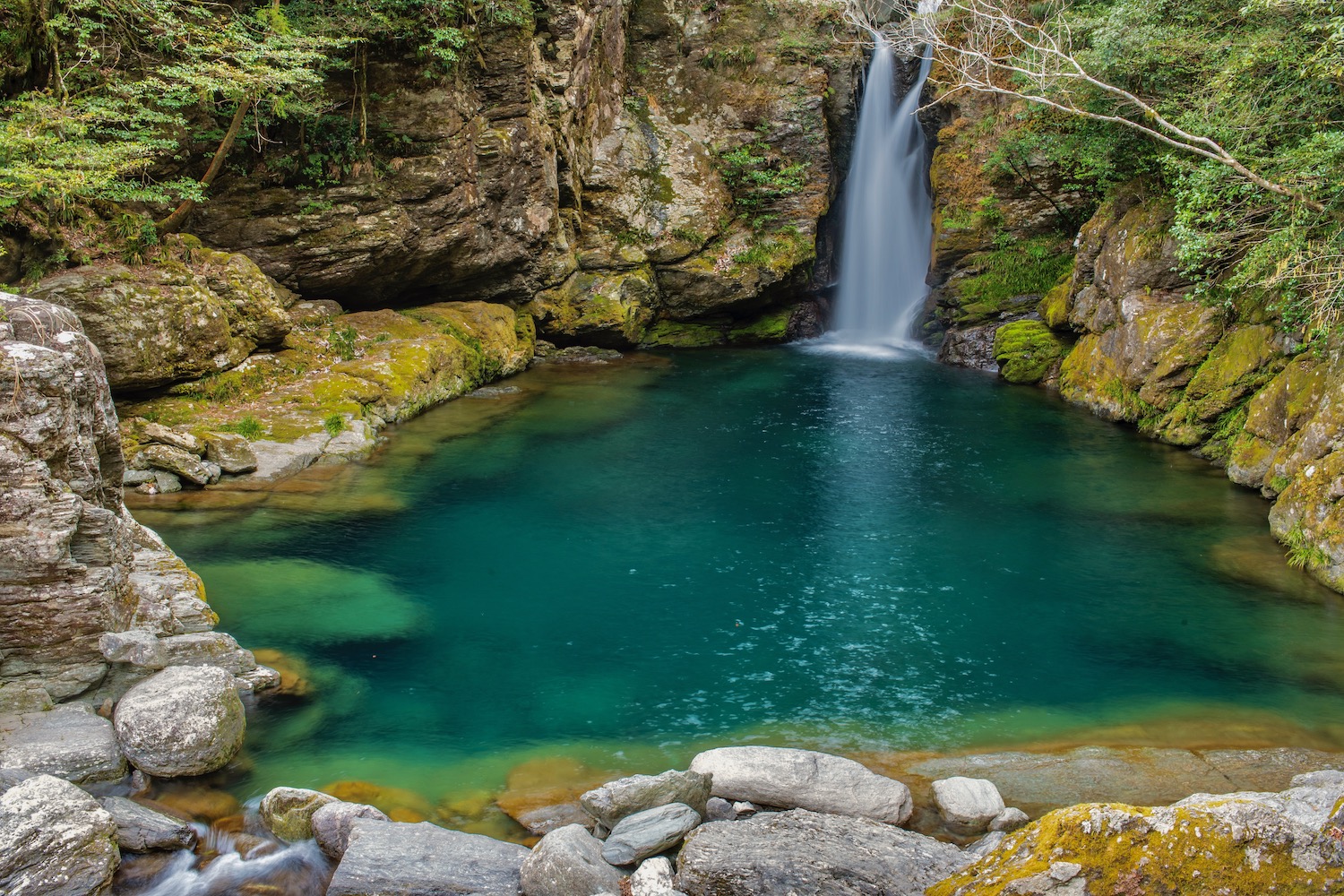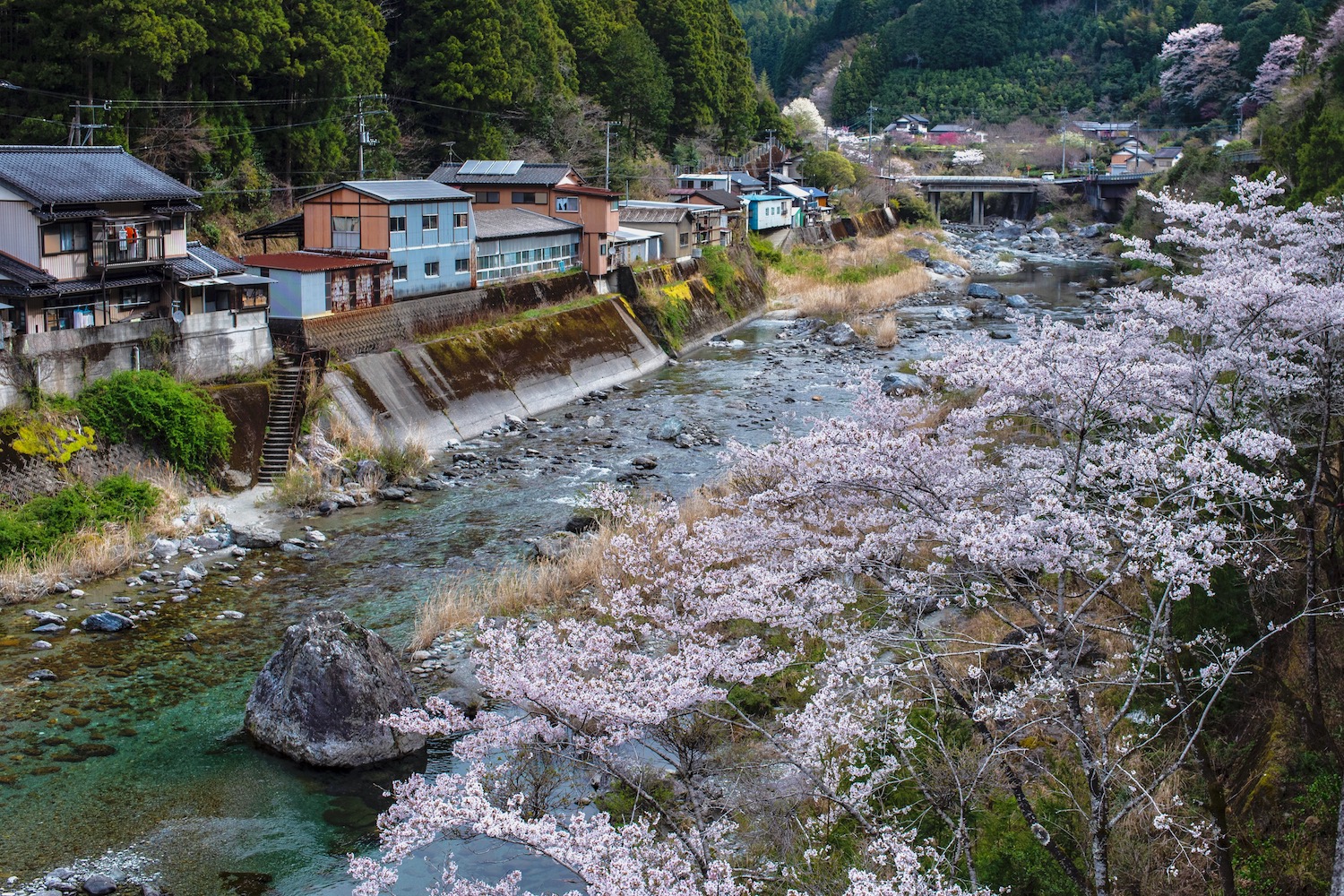I’m always skeptical of news that heralds disaster, but I can’t lie: Being in Kochi when I received a warning about a Nankai Trough “megaquake” was unsettling. Although the alert included a disclaimer—the event has an 80% chance of happening over the next 30 years—Kochi is likely to be the part of Japan most devastated by it, if it does occur.
For the most part, however, imagining a massive wave cresting along the horizon inspired me instead to cherish my time in this supernaturally beautiful corner of Shikoku island, knowing that it might not exist (well, at least not in its current form) forever.
Whether or not the thought of not-so-imminent destruction keeps you up at night, my Kochi travel guide will help you follow in my footsteps. Which is to say, to empower you to make the most of the time you spend in Shikoku’s deep south.
How to Get to (and Around) Kochi Prefecture
For most travelers, flights to Kochi end up being the best option for reaching this part of Japan. This is especially true if you’re coming from Tokyo—or, god forbid, anywhere north and east of the capital. If you were to try and come by train, you’ll need to ride a Shinkansen ~3 hours to Okayama, and then a local train around 2.5 hours from there. The 80-minute flight is much quicker, even considering airport transfer times!
Within Kochi, meanwhile, there are two schools of thought. Inside the city center, a combination of bus/streetcar and your own two feet is the best way to get around. If you wish to explore rural Kochi-ken without having to take an organized tour, renting a car is far and away the best opinion. Click here to read my post that demystifies this sometimes controversial topic.
How to Spend Your Time in Kochi Prefecture
Give Kochi Castle the time it deserves

As one of just 12 remaining original castles in Japan, Kochi Castle deserves half a day of your time if only because of its historical significance. Beyond this, however, it’s just a legitimately impressive structure, whether you enjoy the view from the tenshu (keep), or take in the castle from the observation deck of the nearby Kochi Castle Museum (which is very worth visiting on its own merits).
Eat Katsuo-no-tataki at Hirome Market

No Kochi itinerary is complete without eating the city’s most famous dish. While there are dozens of high-end restaurants throughout the city serving katsuo-no-tataki, aka raw skipjack tuna just barely seared on the outside, I, prefer to eat it within Hirome Market. TIP: While it can be very difficult to get a table at one of the stalls near the entrance to the market, the tataki at ones in less desirable areas is just as delicious.
Explore Cape Ashizuri

Cape Ashizuri is probably the part of Kochi-ken that’s most vulnerable to whatever nasty shakes the Nankai Trough is cooking up. In spite of this, it’s also among the most beautiful and remote parts of the prefecture, whether you walk the tsubaki (camelia) road down to the lighthouse, or simply enjoy the journey there (potentially via the coastal city of Susaki).
Zen out at Nikobuchi Waterfall

Another of my favorite things to do in Kochi is to visit Nikobuchi, which is one of the most impressive waterfalls in Japan (a country where, I’m sad to say, they tend to be underwhelming more often than not). If you have your own set of wheels, the drive from here to Ehime prefecture’s Uwajima is also stunning, especially in spring when both sakura and the peach bloom grove at Hikiki Brudge are in full bloom.
Boat along the Shimanto River

The Shimanto River, which extends southward down to the coast of Kochi, is said to be among the clearest and cleanest rivers in Japan. I can’t comment on this in an empirical way, though I can say that riding a yakatabune boat along the river is a fabulous experience, particularly if your ride includes a local bento lunch of fresh-caught sweetfish.
Where to Stay in Kochi
In most cases, it makes sense to stay in Kochi City, if only because of a greater selection of food and drink (and other creature comforts) there when compared to rural areas. This could be a simple hotel such as the convenient JR Clement Inn or a higher-end property such as Jyoseikan (which, to be honest, might seem less “fancy” than newer properties like the Clement).
On the other hand, if you don’t mind sleeping out in the sticks, then more…rustic properties could prove an appealing alternative to Kochi hotels. I’m thinking, in particularly, like Shimantoyado near the mouth of the Shimanto River, and The Mana Village near Cape Ashizuri, where the option for on-site dinner and breakfast can soften the blow of not having a 7-Eleven nearby.

Other FAQ About Visiting Kochi Prefecture
How do you get around Kochi, Japan?
Within Kochi City, a combination of public transportation (i.e. street cars and buses) and getting around on foot is the best way to transport yourself. If you wish to go anywhere more rural, you’ll realistically need either to take a guided tour, or to consider renting your own car.
What food is Kochi, Japan known for?
Kochi is known for several foods, but the most famous is known in Japanese as Katsuo-no-tataki. Katsuo is a type of skipjack tuna, and tataki refers to the cooking style: Seared on the outside, and beautifully rare on the inside. It’s one of my favorite dishes in Japan!
Where does a cruise ship dock in Kochi, Japan?
Kochi Cruise Terminal is located near Katsurahama Beach, about 15 minutes by car or taxi (or one hour by public transit) from Kochi Station. If you plan to stop here on your cruise, I recommend renting a car or hiring a driver if you plan to explore anywhere in Kochi besides the immediate city center.
The Bottom Line
I hope my Kochi travel guide has informed and inspired you, no matter how deeply you plan to explore this far-southern part of Shikoku island. Some of you will stick to Kochi City, whether that means enjoying the view from the tenshu of Kochi Castle, or savoring katsuo-no-tataki you buy in Hirome Market. Others will rent a car and explore Kochi’s natural beauty, be that dramatic Nikobuchi waterfall, scenic Cape Ashizuri, laid-back Shimanto River or seasonal spectacles like the peach blossom grove at Hikiki Bridge. Need personalize help making sure your trip to Kochi is unforgettable? Hire me to plan your Japan itinerary!






